When reading can be touched: a review of ONYX BOOX Monte Cristo 4
Learning does not mean knowing; there are those who know and there are scientists - some create memory, others - philosophy.
Alexander Dumas, "Count of Monte Cristo" Hi, Habr! When we talked about the new line of 6-inch models of ONYX BOOX book readers, we casually mentioned another device - the Monte Cristo 4. It deserves a separate review not only because it belongs to the premium segment due to an aluminum-magnesium alloy case and a screen with protection from the Japanese manufacturer Asahi; Monte Cristo 4 is the flagship of the line, which, with a smaller screen diagonal, is able to offer performance at the level of its older brothers, and it has become even more interesting to interact with content. All the details are traditionally under the cut.

Until recently, ONYX BOOX readers with a large screen diagonal could boast of flagship characteristics. There is no need to go far for examples - take the same Gulliver or MAX 2 , which we have already reviewed in detail. It turns out, if you need advanced iron, you had to choose large devices. But power is not always closely aligned with the size of the screen: it often happens that the user needs maximum performance in a compact package. For such readers, ONYX BOOX Monte Cristo 4 was released.
The new model has become a logical continuation of the ONYX BOOX brand reader line, which is represented in Russia by MakTsentr. In the naming of the model, Alexander Dumas again helped with his famous novel “The Count of Monte-Cristo”, to which you can find a lot of references - and this applies to both the external design of the box with the device and its filling (when putting the book into sleep mode, various sketches from books). The fourth iteration of ONYX BOOX Monte Cristo can’t be called a tick update. To verify this, just glance at the technical characteristics of the new reader:
What is so interesting in our "graph"? First, the latest generation E Ink Carta Plus screen with SNOW Field function and MOON Light + backlight, which allows you to adjust the color temperature of the backlight. At the same time, the display has an impressive resolution of 1072 × 1448 pixels and an outstanding pixel density of 300 ppi for this type of screen. The indicator is comparable to the quality of paper printing.
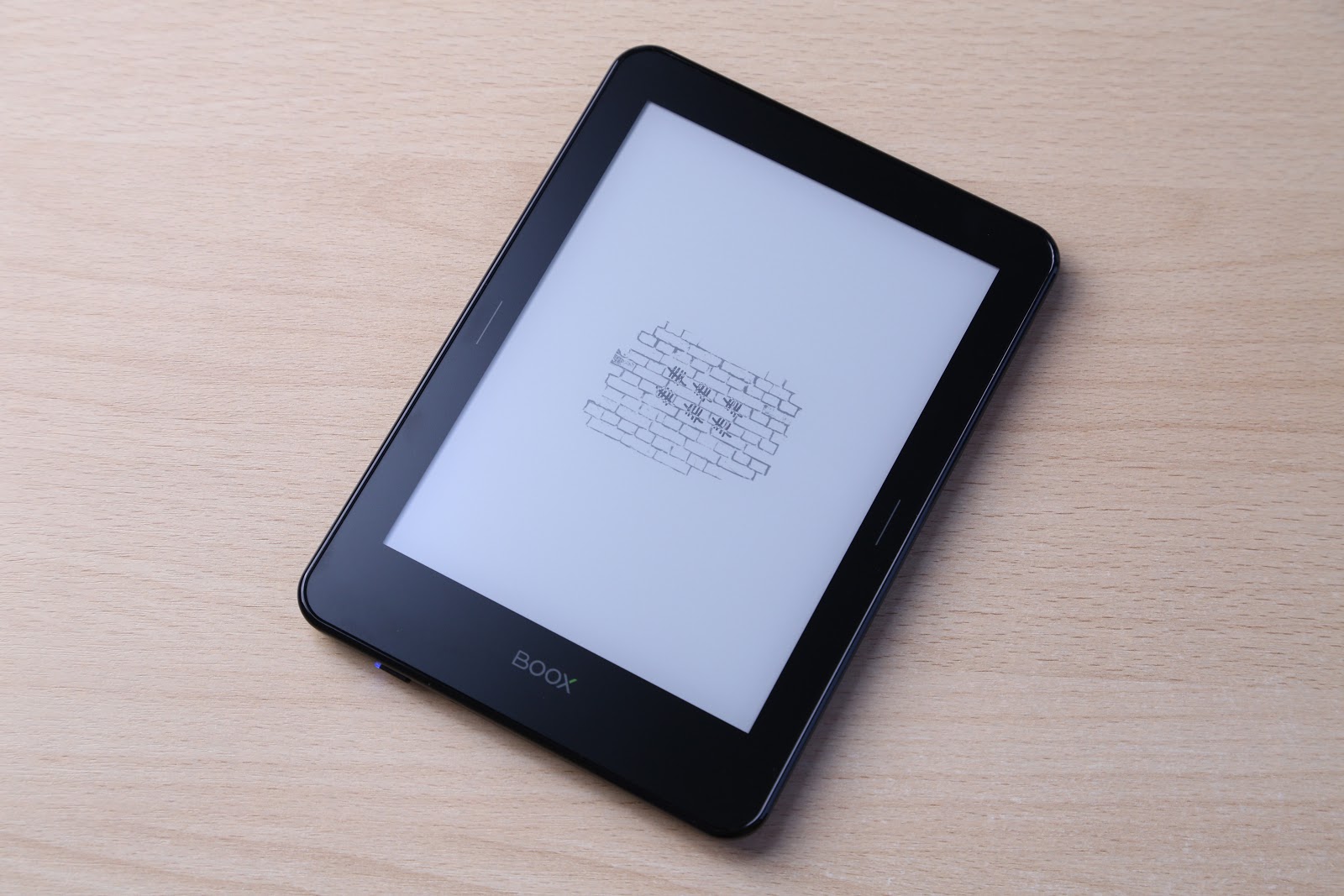
For sweetness - 1 GB of RAM (no need to be surprised, this is REALLY a lot for an e-book), 8 GB of storage due to the support of memory cards and Wi-Fi for accessing the Internet using the built-in browser and connecting network libraries. I was a little surprised that it was decided to “roll” the shell on Android 4.4, not Android 6.0, but this had no effect on the reader’s functionality.

The new mobile version of Habr is great for reading from an e-book. We
'll talk more about the reader’s functions a little later, but for now let's see what the potential customer will appreciate with the new product package.

The manufacturer is always pleased with interesting packaging, and the box Monte Cristo 4 is no exception. It is made of white dense cardboard, on the front of which stands the name and the lock If. The package bundle is already familiar to us from other ONYX BOOX readers: the e-book itself is in a cover case, the charger (220 V) is a standard charger, USB cable and documentation. You can get the reader out of the box very easily.
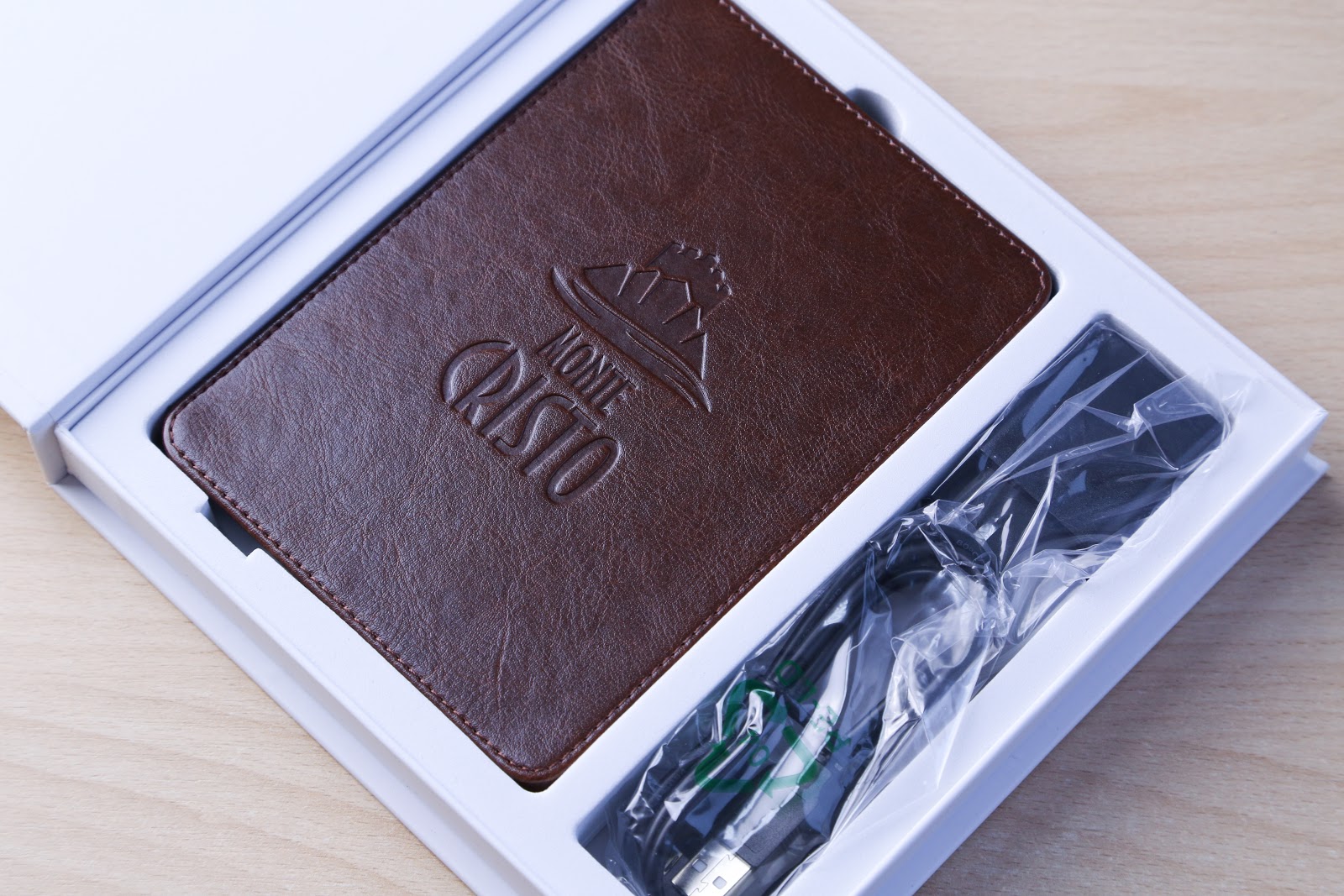
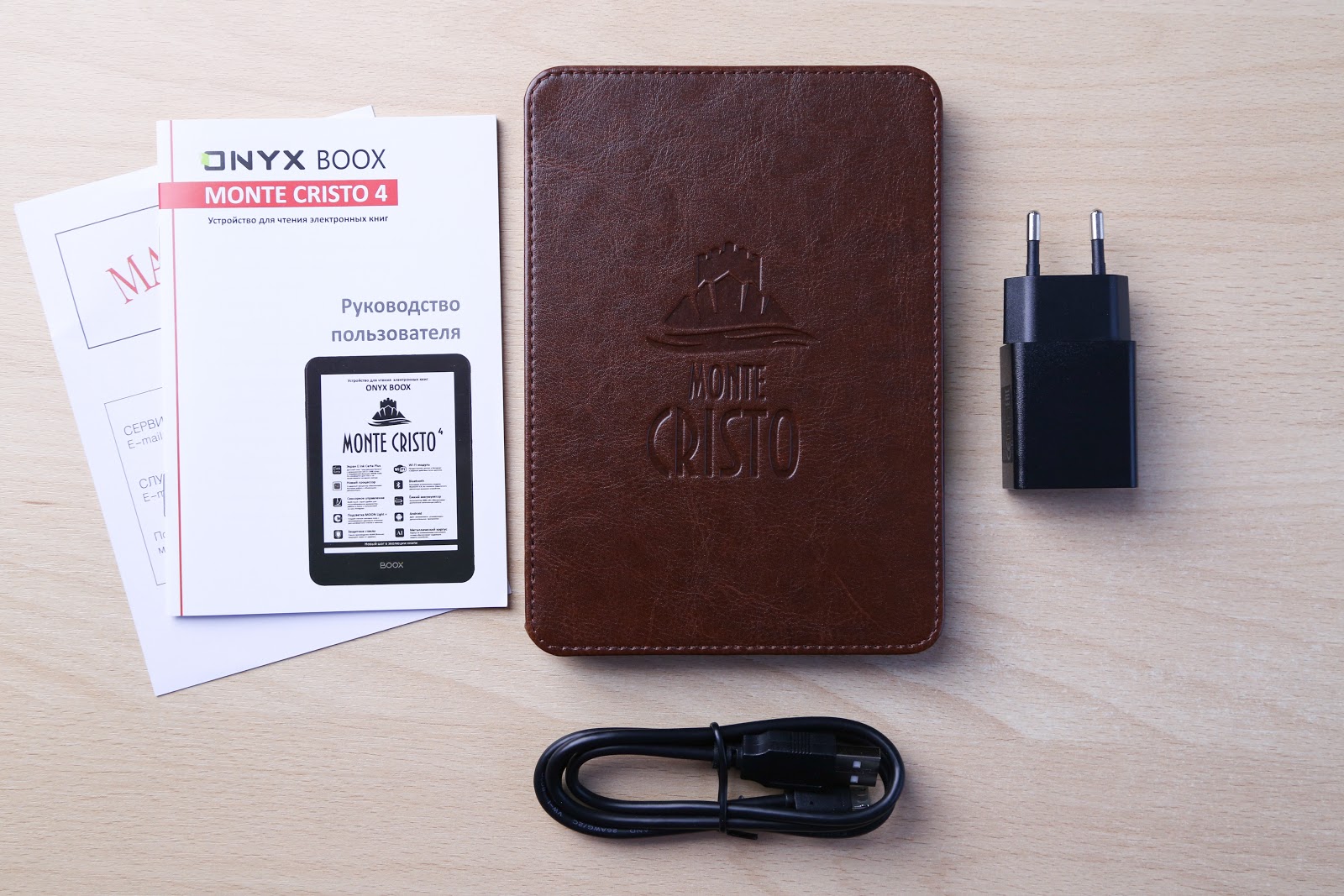
The case mimics rough, embossed leather and has a hard frame, as well as two magnetic snaps. Inside there is a soft material to protect the screen. The Hall Sensor helps the book automatically go to sleep when the cover closes and wake up when it is opened. When reading, it does not distract, as it does not hide one centimeter from each side. Securely fixed, however, the thickness of the entire structure is almost doubled.
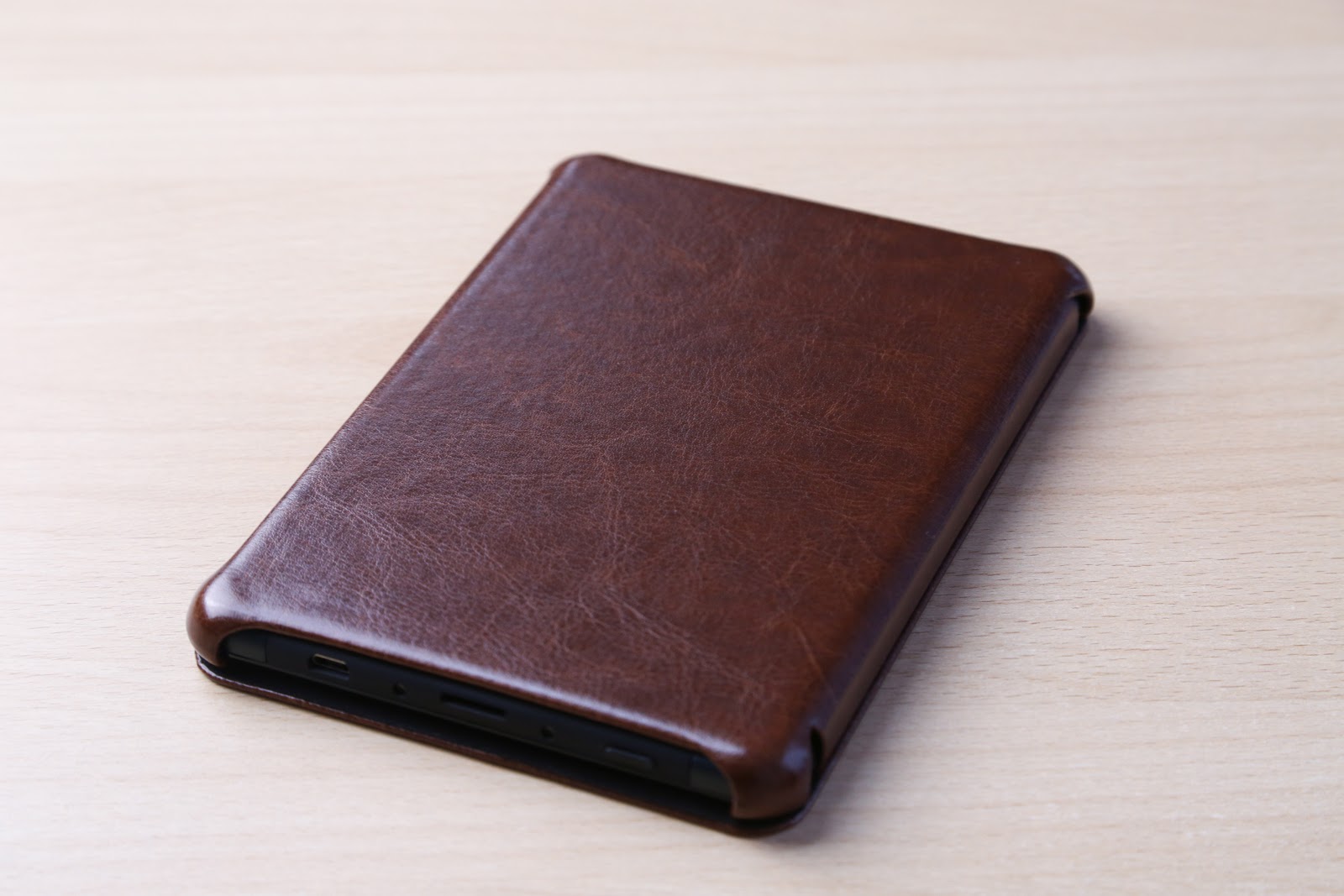
According to the image, the cover-case almost completely repeats the box - on it the name of the model and the same lock If, where Dantes was sent without trial in the eponymous work. Here you begin to understand why the manufacturer chose this name for its new product. Edmond Dantes, the protagonist of the novel, was known to have spent several years in prison, and he would definitely need an e-book that could work without recharging for up to a month (another thing was that there was no electricity and he could not recharge it but omit this moment). Other ONYX BOOX readers also have a talking name - one of them is dedicated to Robinson Crusoe, who spent a long time on an uninhabited island. By the way, the island "Monte Cristo", where Dantes subsequently found a treasure, was also uninhabited. A tablet or smartphone in such conditions will be discharged after two days (at best), the reader will last much longer, especially if you use it for 2-3 hours of reading per day. In standby mode, the charge he practically does not consume.
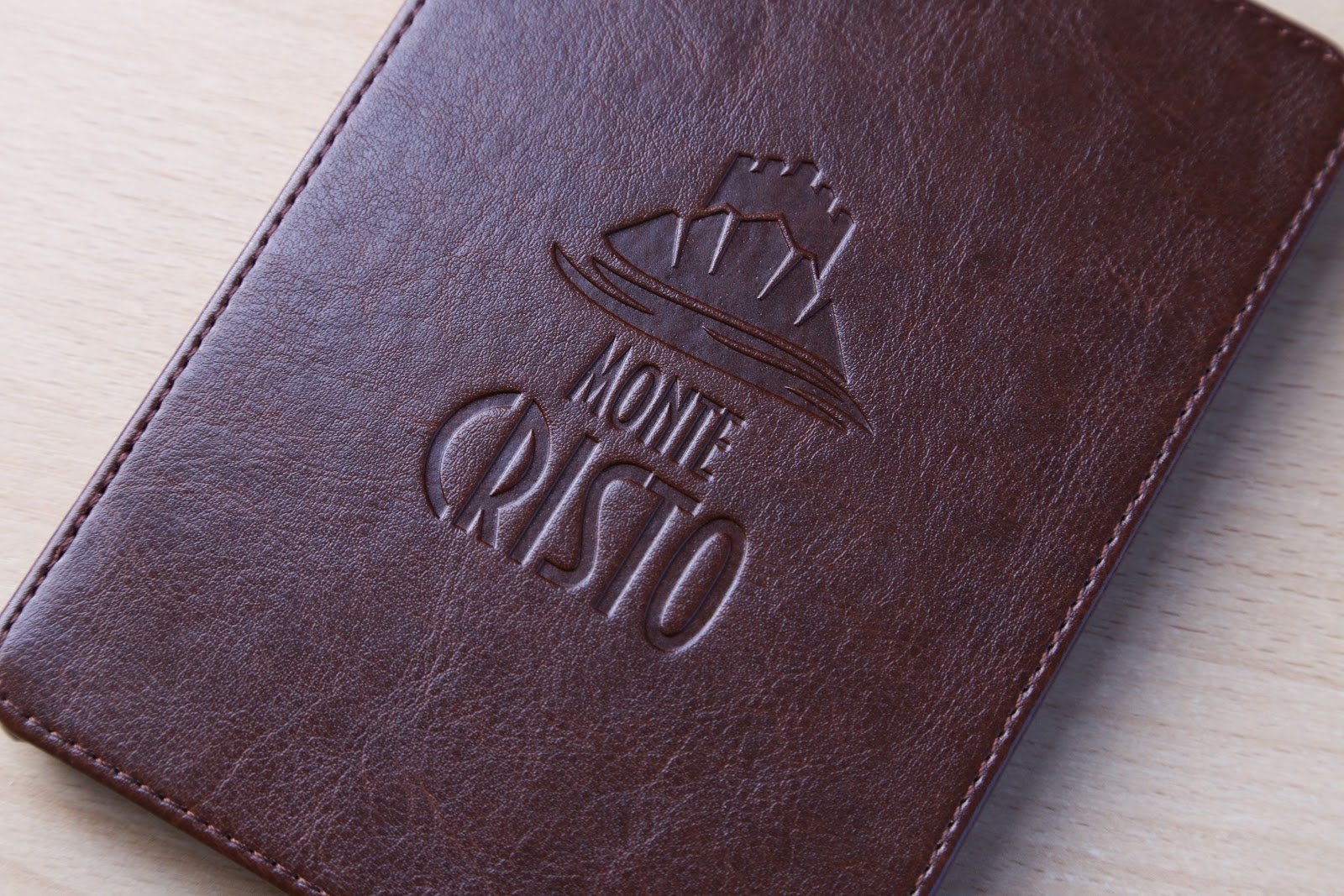
Of course, these are far from the only cases of using an e-book, and in order to know all the charms of this type of device, it is not at all necessary to end up in the SIZO or far from civilization. At the same time, it is precisely with such examples that one can truly appreciate the autonomous operation time of the reader, with which no mobile device can be compared that is suitable for performing similar tasks.
The reader is made in matt black, the case of the device is made of aluminum-magnesium alloy - another hint of premium positioning. The front has a protective glass from Asahi (the Japanese equivalent of Gorilla Glass), so this is one of the few devices that can be worn without a cover or cover. Of course, this device does not do much shock-resistant combination, but the likelihood that the glass will break is significantly reduced compared with conventional plastic-e-book reader. Despite the small diagonal, the device feels very monolithic and looks much more solid plastic readers. Whatever you say, and the use of metal in the device does its job.
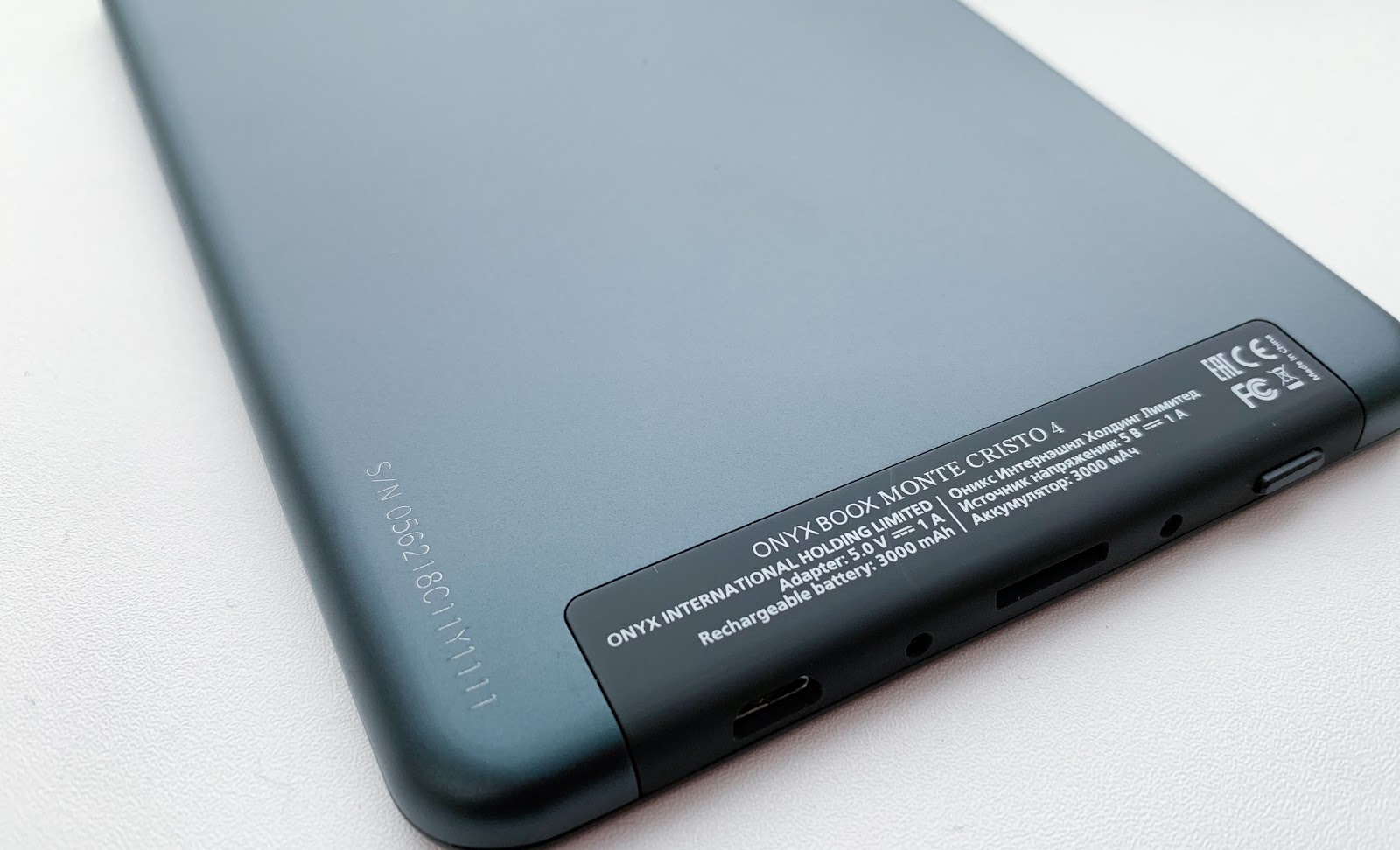
There are almost no physical buttons, except for the button in the (s) key. Adjacent to it is an LED indicator that lights up red when connected to a power source or blue, if, for example, the device is turned on. A little further - a connector for charging and memory cards. Everything is minimal and tasteful.


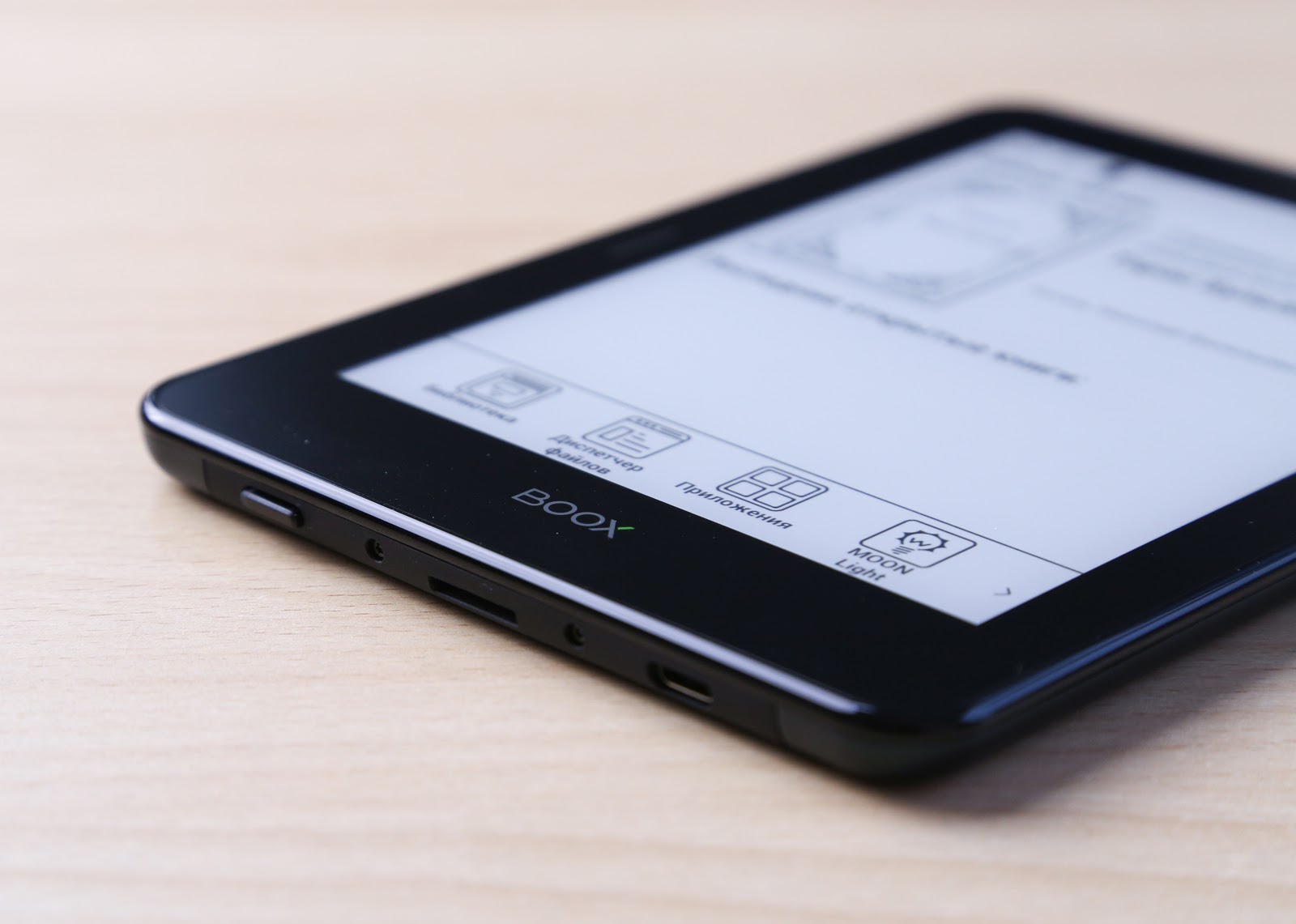
And there are no more buttons here - if you just call the touch inserts on the sides, which by default act as a tool for turning pages while reading, and also a touch button built right into the manufacturer's logo (it's really cool, like working on an iPhone). Even the flagship ONYX BOOX MAX 2The buttons are physical, and here the hop - and the sensor was delivered. Is it possible to customize? Of course, the assignment of buttons changes in the settings: for example, you can assign them to turn on the backlight or the role of the "Menu" button.
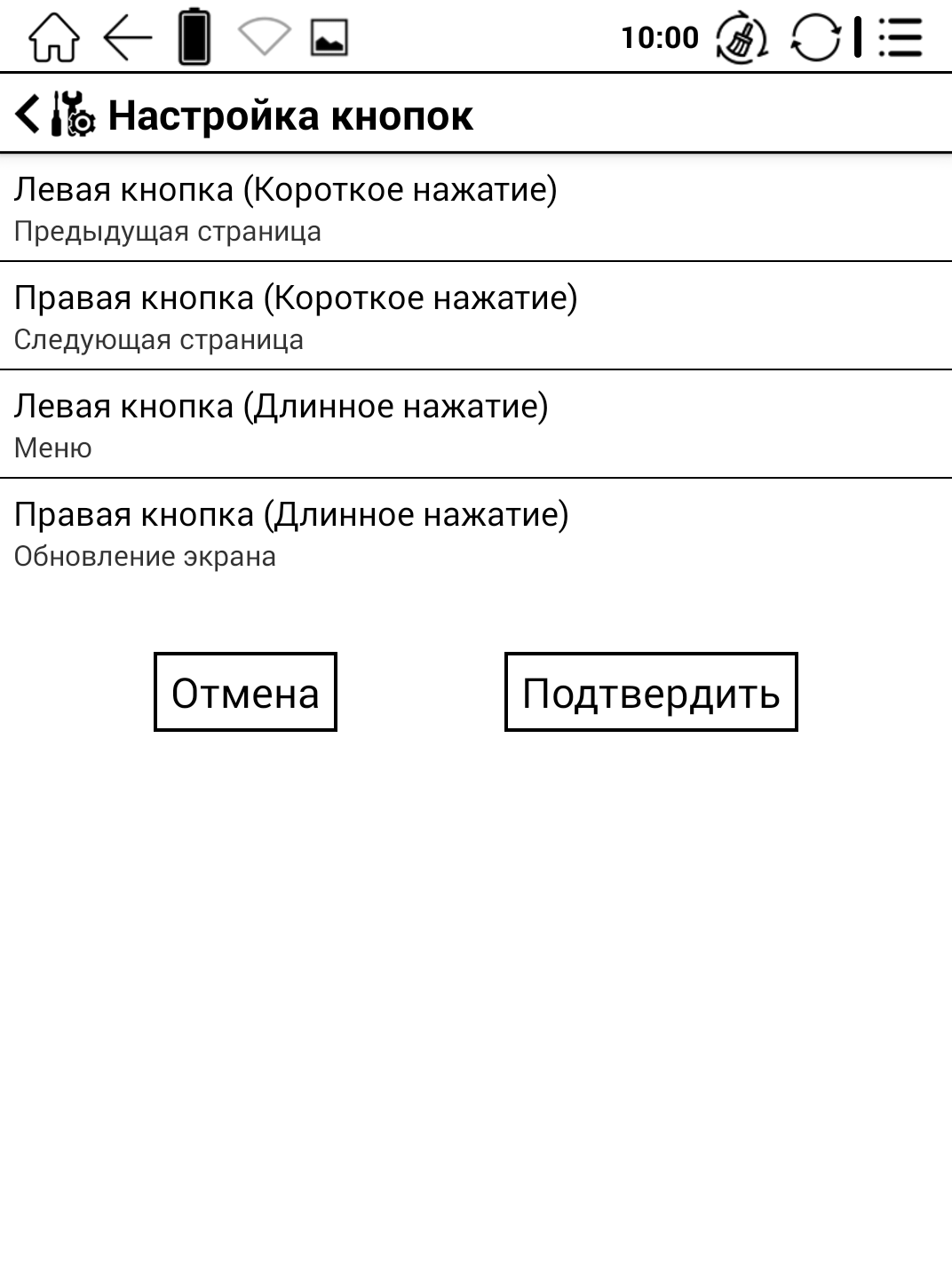
In addition to the screen and control buttons, on the front panel there is the logo of the manufacturer, the back is completely empty. However, when using the cover from the kit (and it’s better to use it), the back end will still be completely closed.
In fact, for ONYX BOOX, this design is a breath of fresh air. The reader looks much more modern (and in 2019, the physical buttons are almost never found anywhere else), it was not for nothing that the updated appearance was made one of the trump cards of the Monte Cristo flagship.
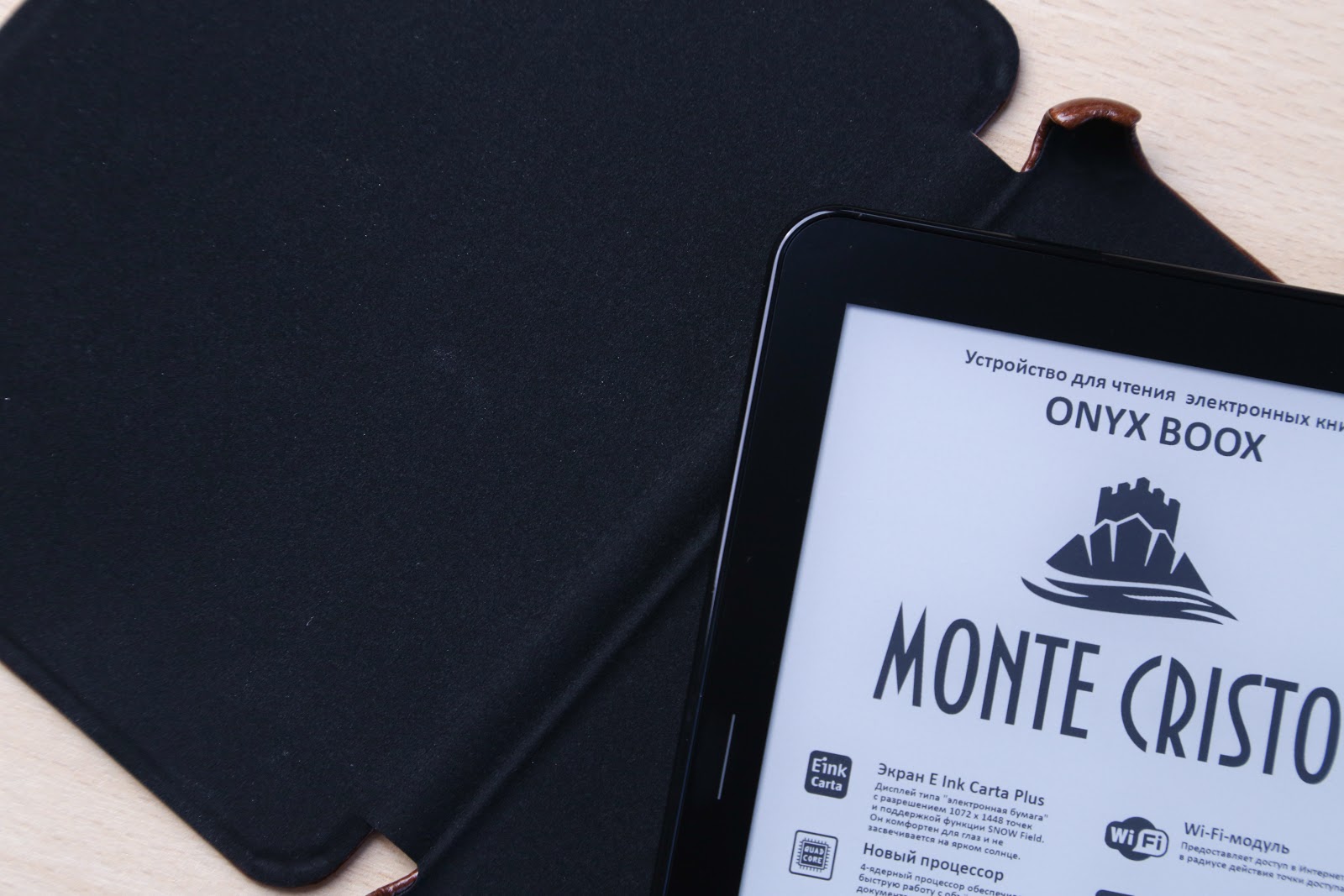
Despite the fact that the E Ink Carta Plus 6-inch screen, it fits quite a lot of content and it is very clearly displayed - the resolution of 1072 × 1448 pixels and high pixel density make the image almost indistinguishable from a paper book (except to rustle with pages and shed coffee will not work on them). In comparison with the usual E Ink Carta screen, the resolution is noticeably higher. It is pleasant to look at the screen, eyes do not strain, fonts of any size remain clear (it's like a retina-screen after the usual one). If something needs to be increased - for example, if you open a multi-page PDF with an apartment plan for future repairs, there is always a multitouch zoom.
The diagonal of the device is ideal primarily for works of art. However, this is not a problem with any other ONYX BOOX reader. Not bypassed and important function MOON Light +, which the manufacturer uses in all its new devices. If the usual MOON Light backlight allowed adjusting the intensity of the emitted light, then its second iteration is distinguished by a separate adjustment of warm and cold light. It makes it possible to read in low light conditions: this is especially noticeable before bedtime, when a warm shade is much more pleasant to perceive the eye than a cold one (not for nothing that Apple has a similar Night Shift function; and f.lux has millions of users). With this light you can sit for your favorite piece before going to bed for several hours, and your eyes will not get tired. Well, get to sleep faster
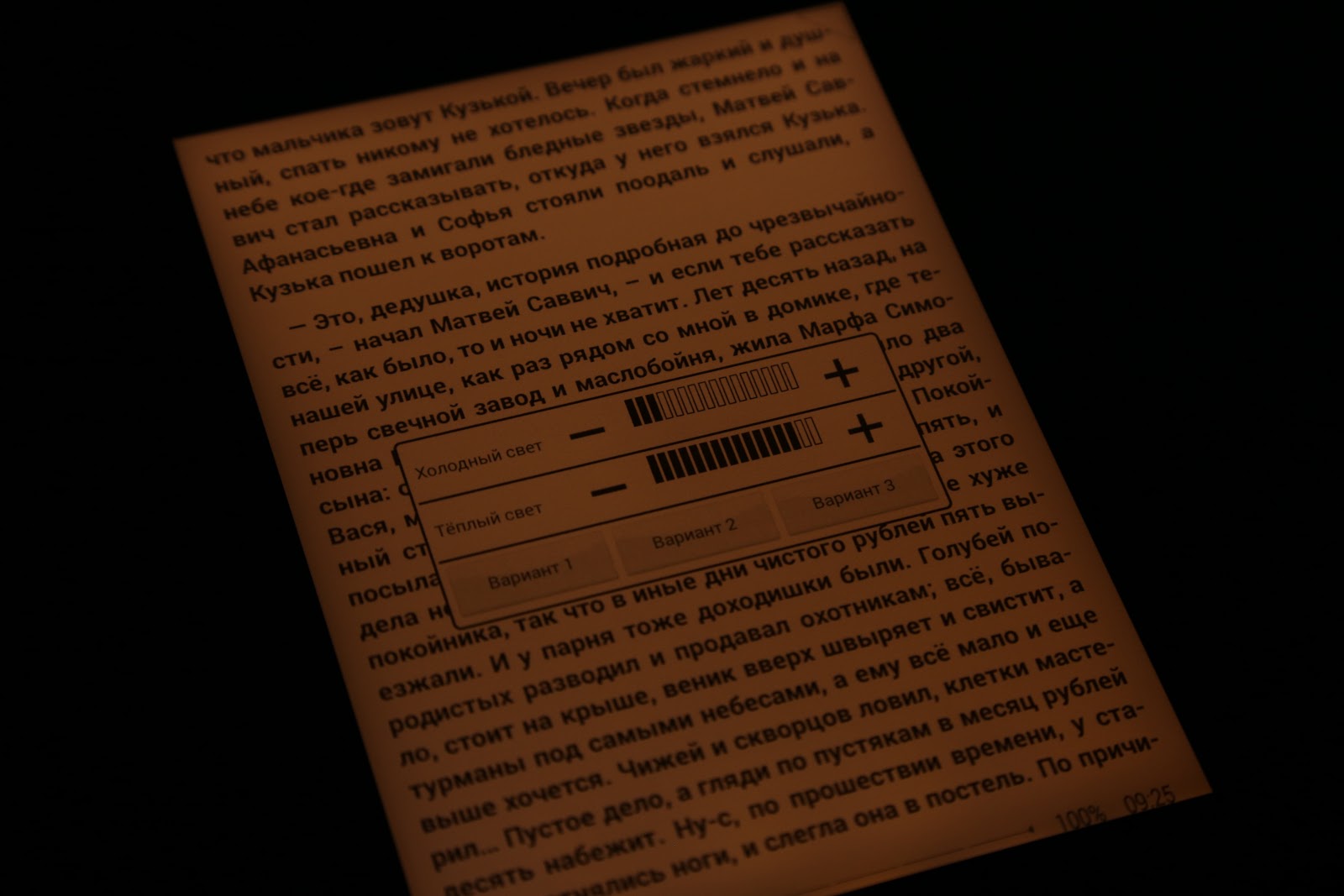

The standard set of functions of ONYX BOOX readers can also be attributed to the SNOW Field technology: it minimizes the number of artifacts (residues from the previous image) on the screen with partial redrawing. If you flip through the pages, no remnants of the previous text remain (what is the reason that the readers of 10 years ago have sinned).
On the interface, you can not stop in detail, because in modern manufacturer's reading rooms it is the same plus or minus, with the exception of a couple of elements. For example, if the reader does not have Wi-Fi support, then the Browser application is not required. After switching on, Monte Cristo 4 shows the main navigation screen (well, after pasting from the novel of the same name), where it is possible to access the library, open the file manager, the applications section, open the MOON Light + backlight setting, enter the general settings, and launch the browser .

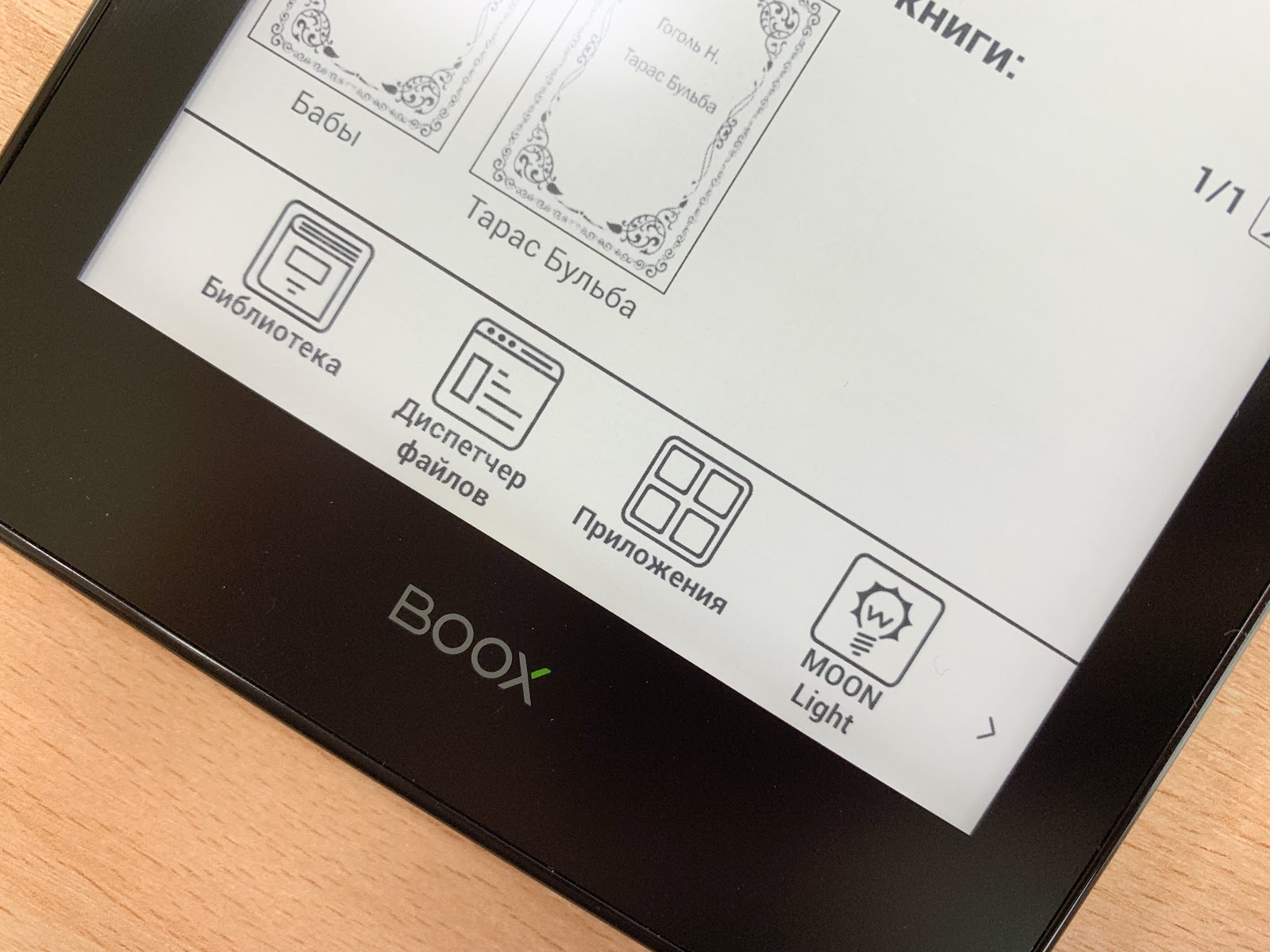
Icons are conveniently located on the bottom panel - after the smartphone is very familiar.
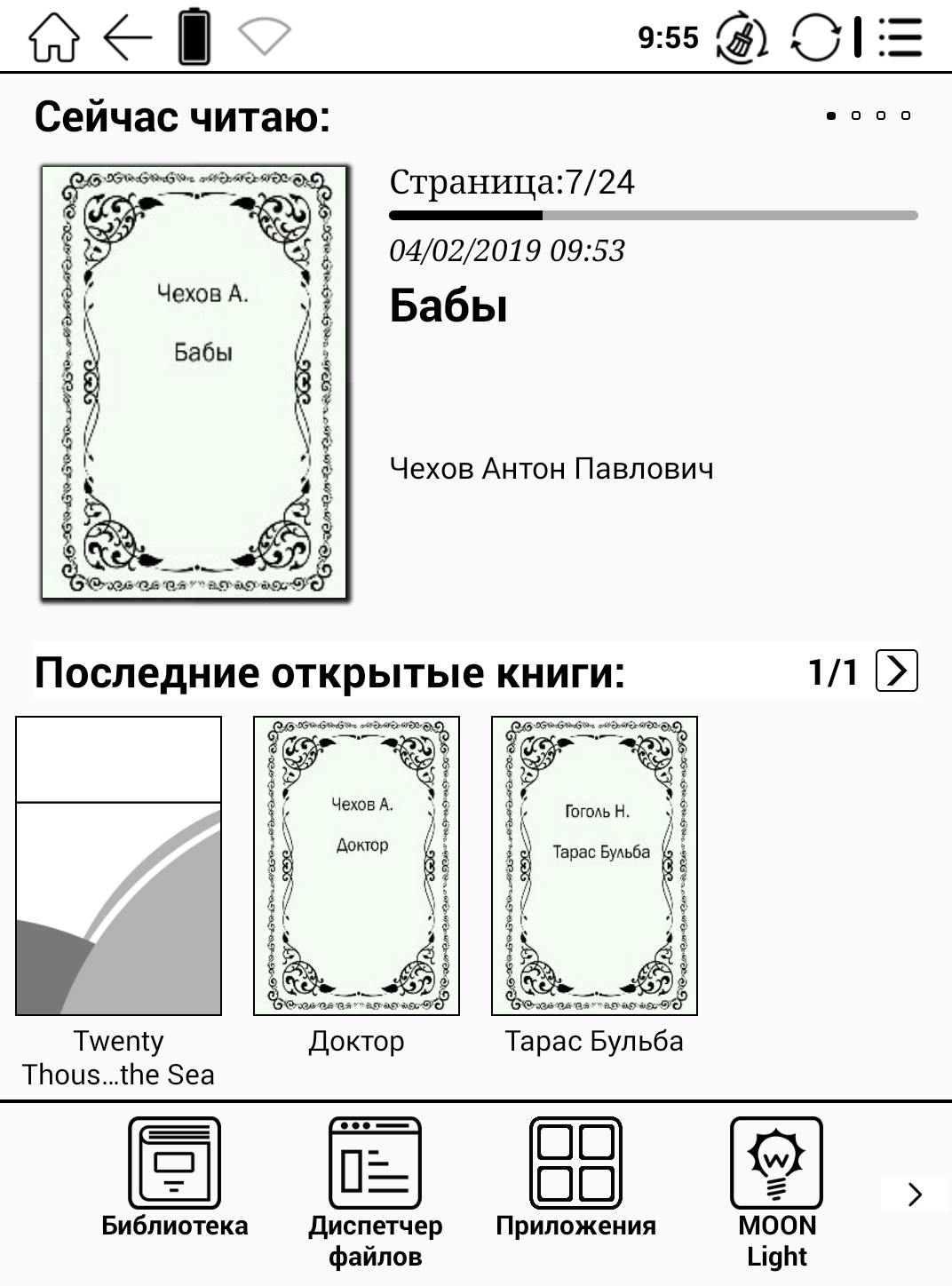
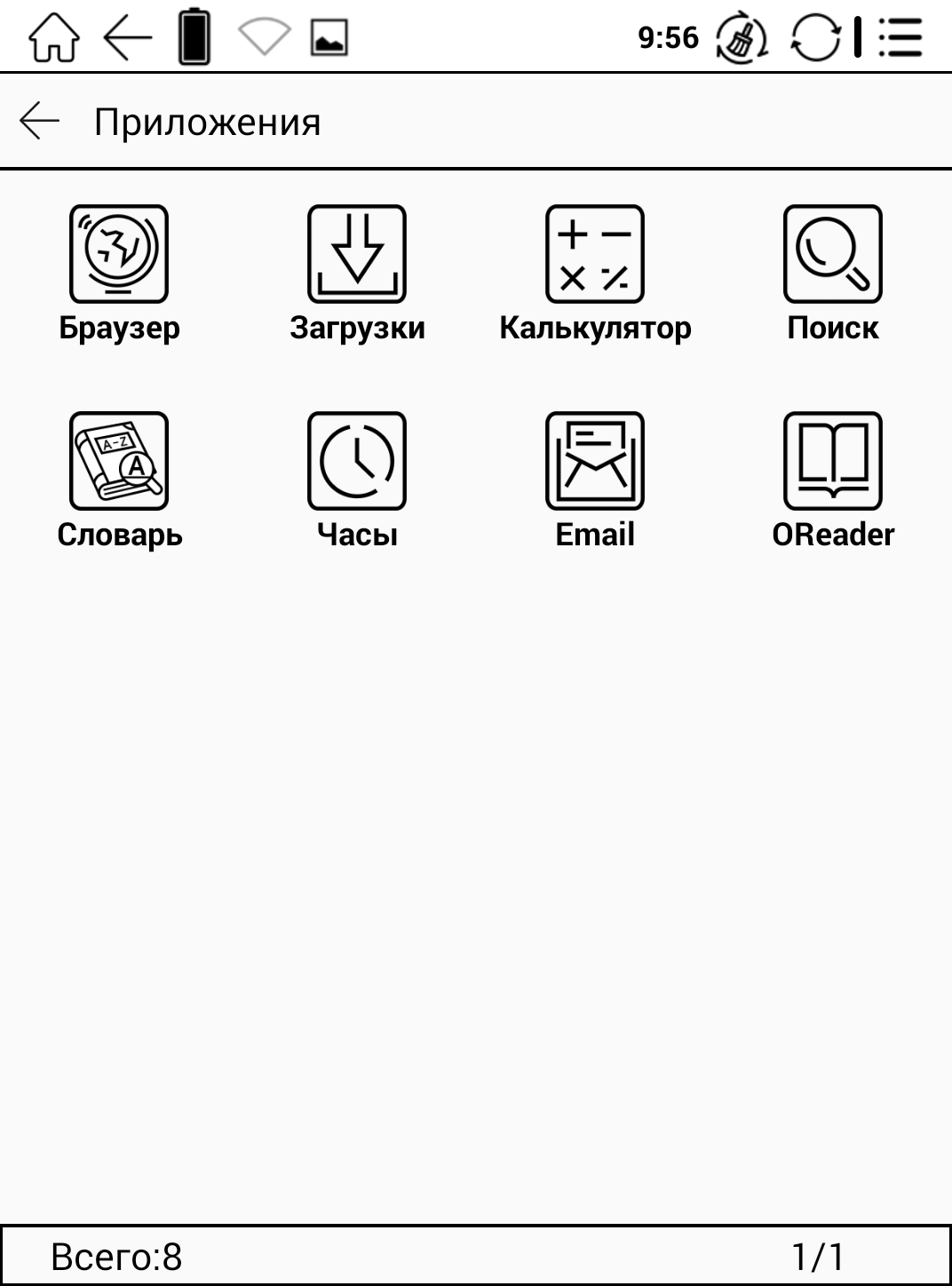
There are also two reading applications - OReader and Neo Reader version 2.0, both already familiar to us from previous reviews. In OReader, above the page turning bar, there is a panel for accessing book display parameters and useful tools. If you work with files in PDF / djvu format, you can select a specific area to zoom in, read an enlarged page by fragments, crop by page and width, change the scale, activate the backlight, go to the settings for customization. For graphs and charts, it is better to tweak the contrast, so that small values look even better, and in dark time, make the screen tint a little warmer. Here you can prepare for the report at work, and for the exam, and read a book for yourself. And, of course, the touch screen on the e-reader is an incredibly convenient solution.

You can scroll through with a simple press, and swipe left or right, as well as using the touch buttons. The autolocation function turned out to be very convenient, its speed is regulated by repeated pressing the paging buttons. It is useful when you need to rewrite the outline, and do not want to be distracted each time and include the next page.
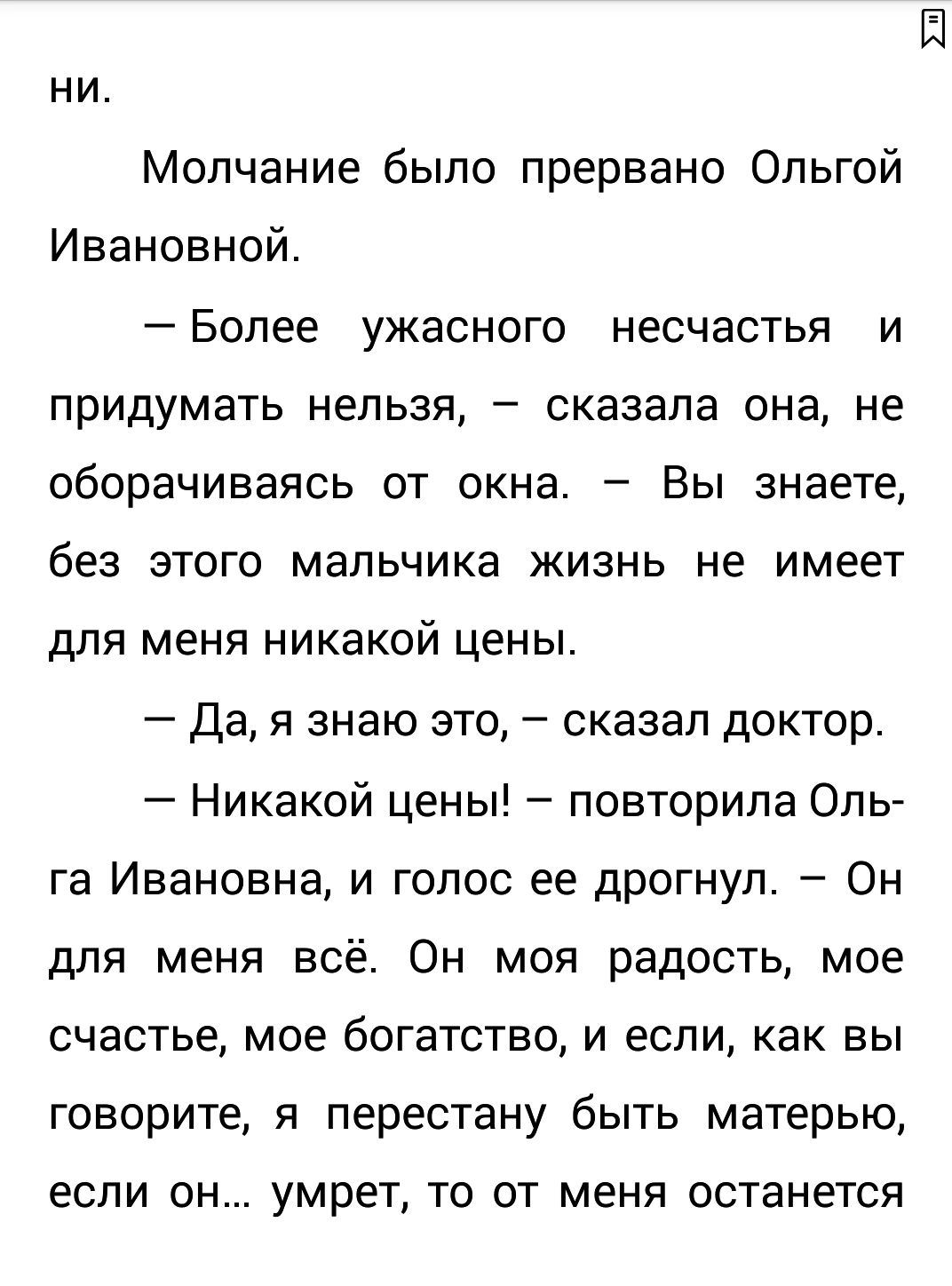
If you load a book with heavy pdf-kami, you definitely will have a little built-in 8 GB of memory. In this case, there is a microSD slot with support for memory cards up to 32 GB. When using the reader to study or just for episodic reading, then 8 GB will be more than enough. Supported formats are also enough - DOCX, PRC, CHM, PDB and many others.
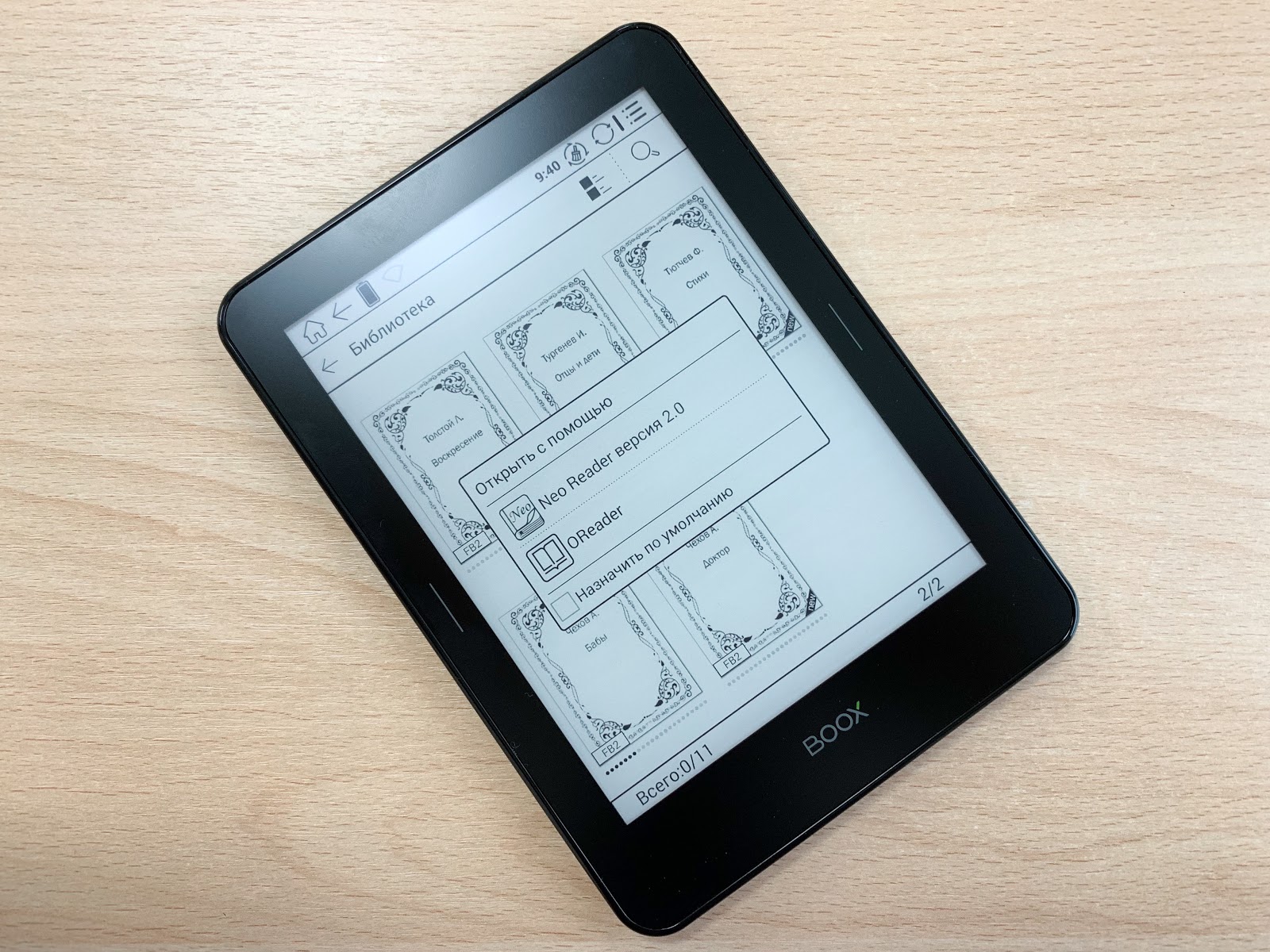
When reading, it becomes useful not only a full multi-touch with the support of five simultaneous touches, but also a call to translate a word using a loaded dictionary (just touch the desired word and hold until the translation appears), automatic memorization of the last open book and page and the ability to quickly select a font, rotate image, italicize the fragment and much more.
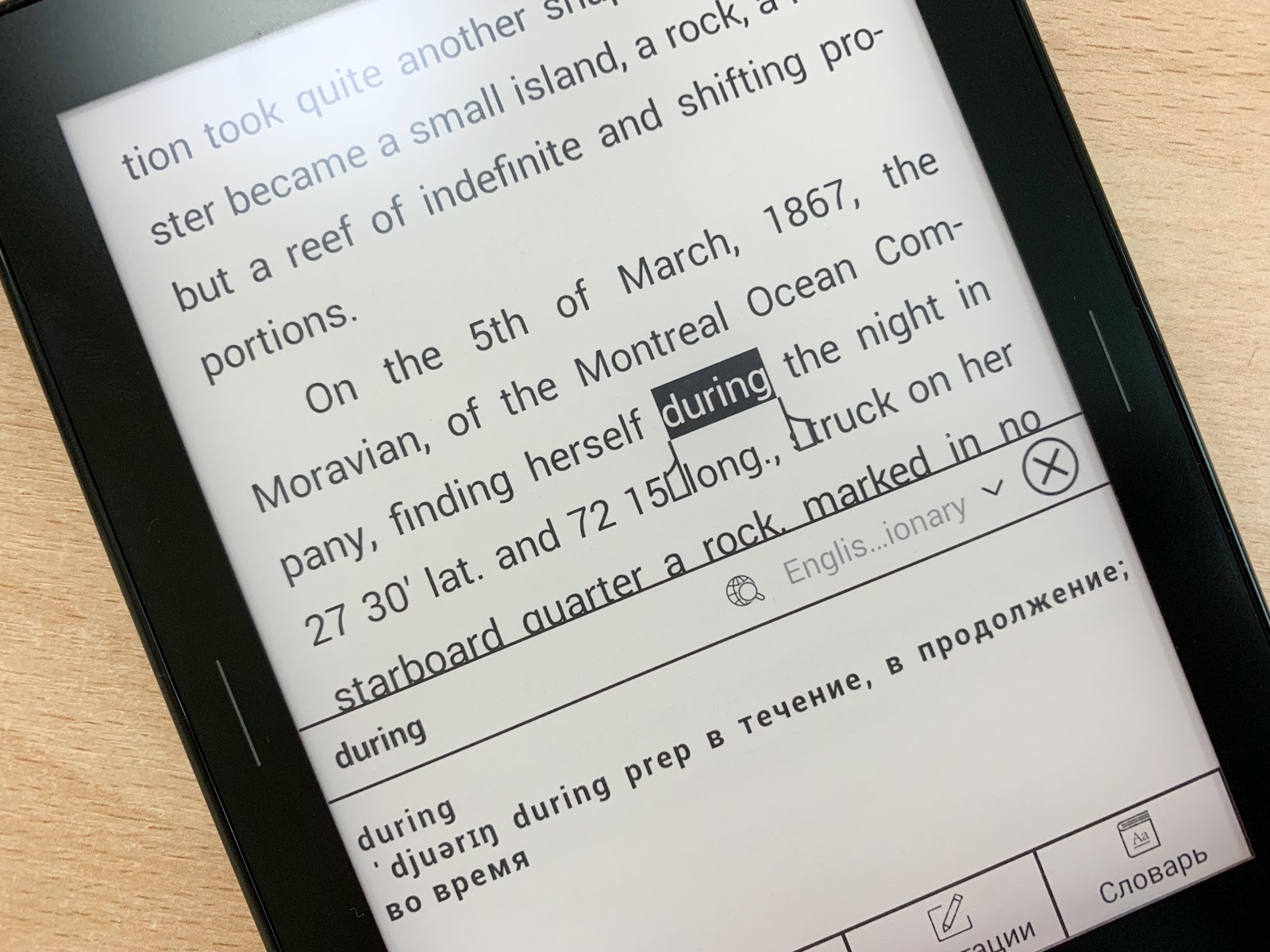
Many people are often worried about the speed of the device, and there are no problems with this: the 4-core processor and 1 GB of RAM do their thing: the reader quickly opens books and looks through the pages, and also quickly performs operations like zoom and smooth scrolling. The device also reacts quickly to the touch buttons, and in general the interface is responsive, you will not notice any lags or hangs regardless of the open document: be it a small book or a huge PDF manual.
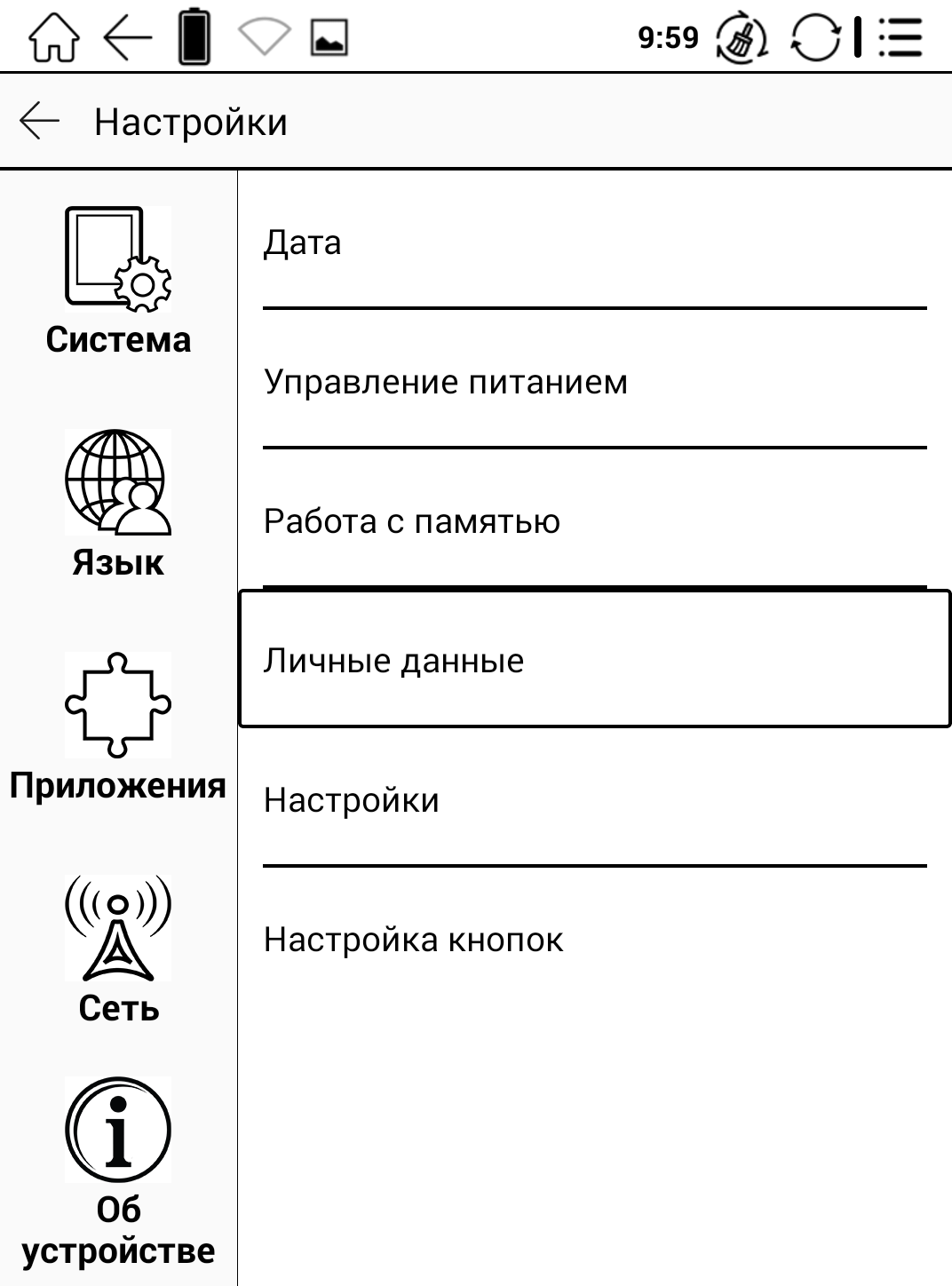
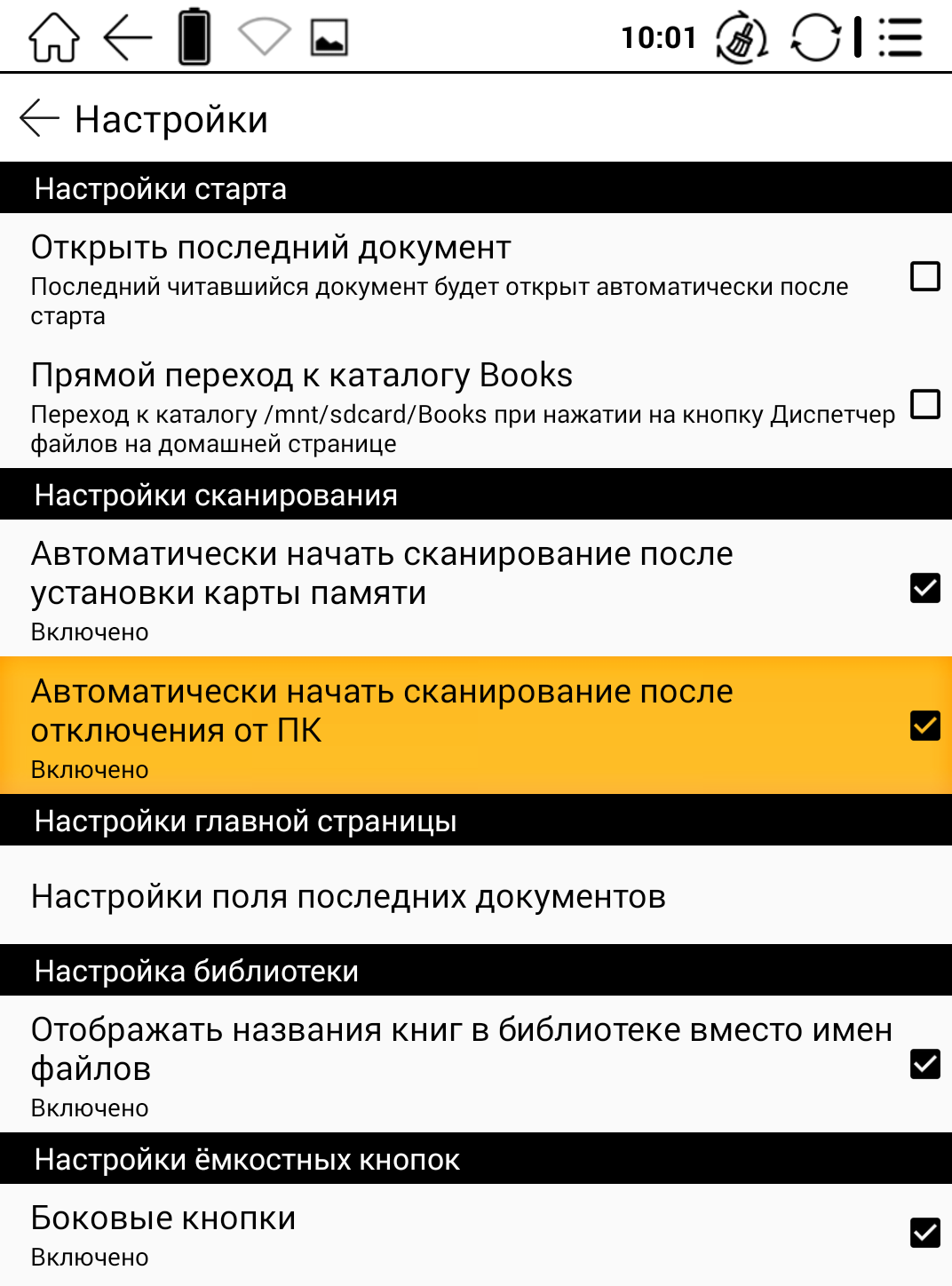
Where to get books? Everyone, as a rule, answers this question himself, but it is still impossible to find anything better than official sources. Now there are a lot of shops with electronic versions of books, and after downloading, you can download the work to your device in a couple of clicks (even on a Mac, if you use something like Android File Transfer). Well, plus in Monte Cristo 4 there is Wi-Fi, which means support for network libraries (OPDS-directories). These are hundreds of thousands of free books with convenient sorting.
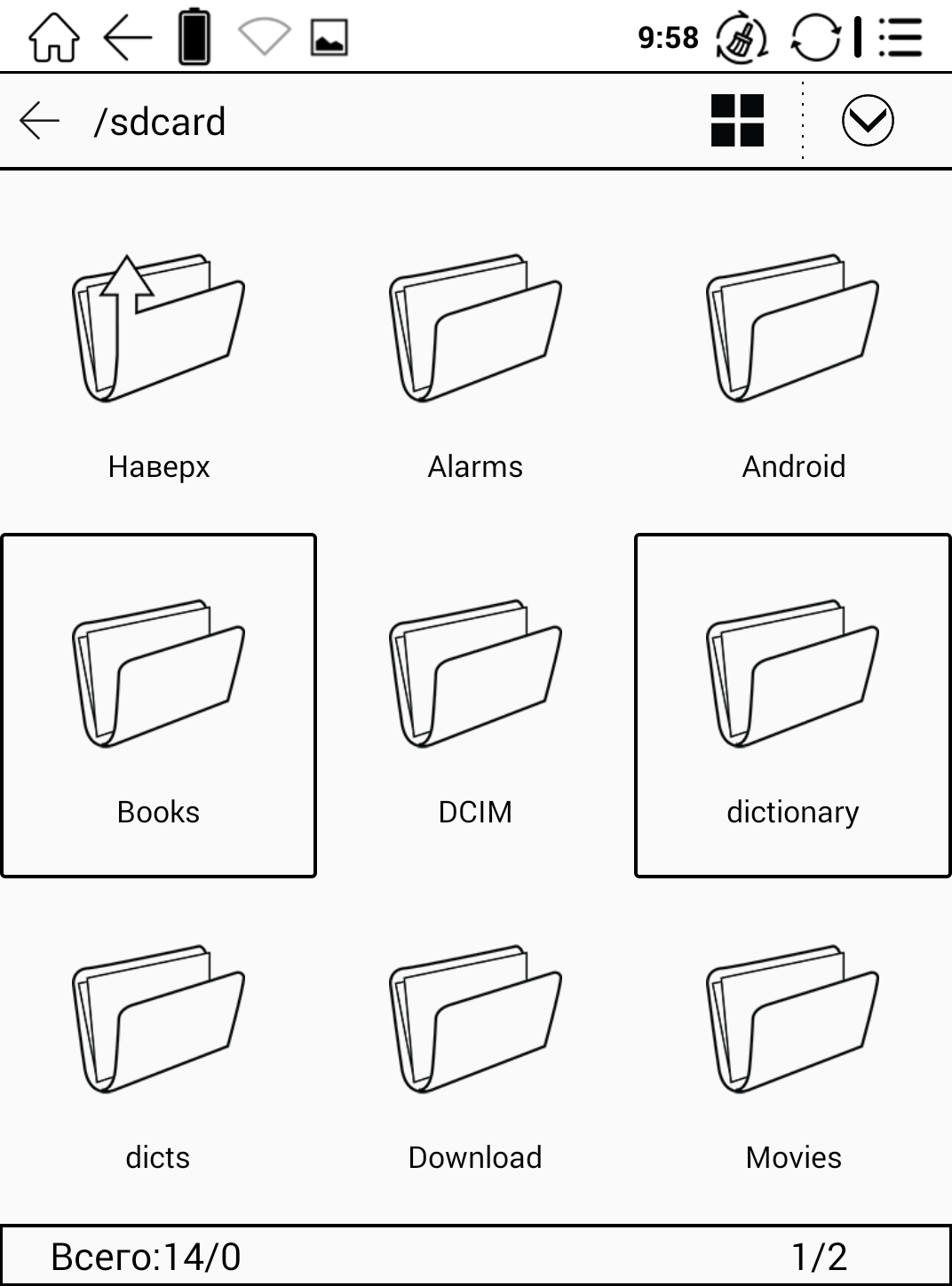

You can spend a little more time to describe all the advantages of this reader, but mostly they will be similar to the same Darwin 6, which we have already a few days ago in detail told . Therefore, it is important to highlight the main differences, thus summing up a small result:
To know all the delights of the reader, it is not necessary to spend several years in distant places like Dantes (or even 15 days) or go to an uninhabited island like Robinson Crusoe. There are a lot of cases for using e-books, here are some of them.
On learning. You can forget about a ton of textbooks and notes, because the reader allows you to read them just like a paper equivalent, without fatigue for the eyes and other artifacts. The built-in dictionary makes it possible to read in other languages, and the translation of the word is displayed directly on the same page. A long battery life allows you to forget about charging for at least several days (or even more, depending on how intensively you use the device), and the high-resolution screen, like Monte Cristo 4, can even cope with the literature on analytical geometry and linear algebra. displaying each character.
In the work. Now this is a less popular case for using e-books, but the development of the relevant market makes readers more and more popular among technical workers and journalists. The former can load multipage documents and not worry about “charging”, while the latter can comfortably study the literature on the topic and simply replenish their vocabulary. Programmers generally can use the reader as a second monitor - MAX 2 is well suited for this purpose.
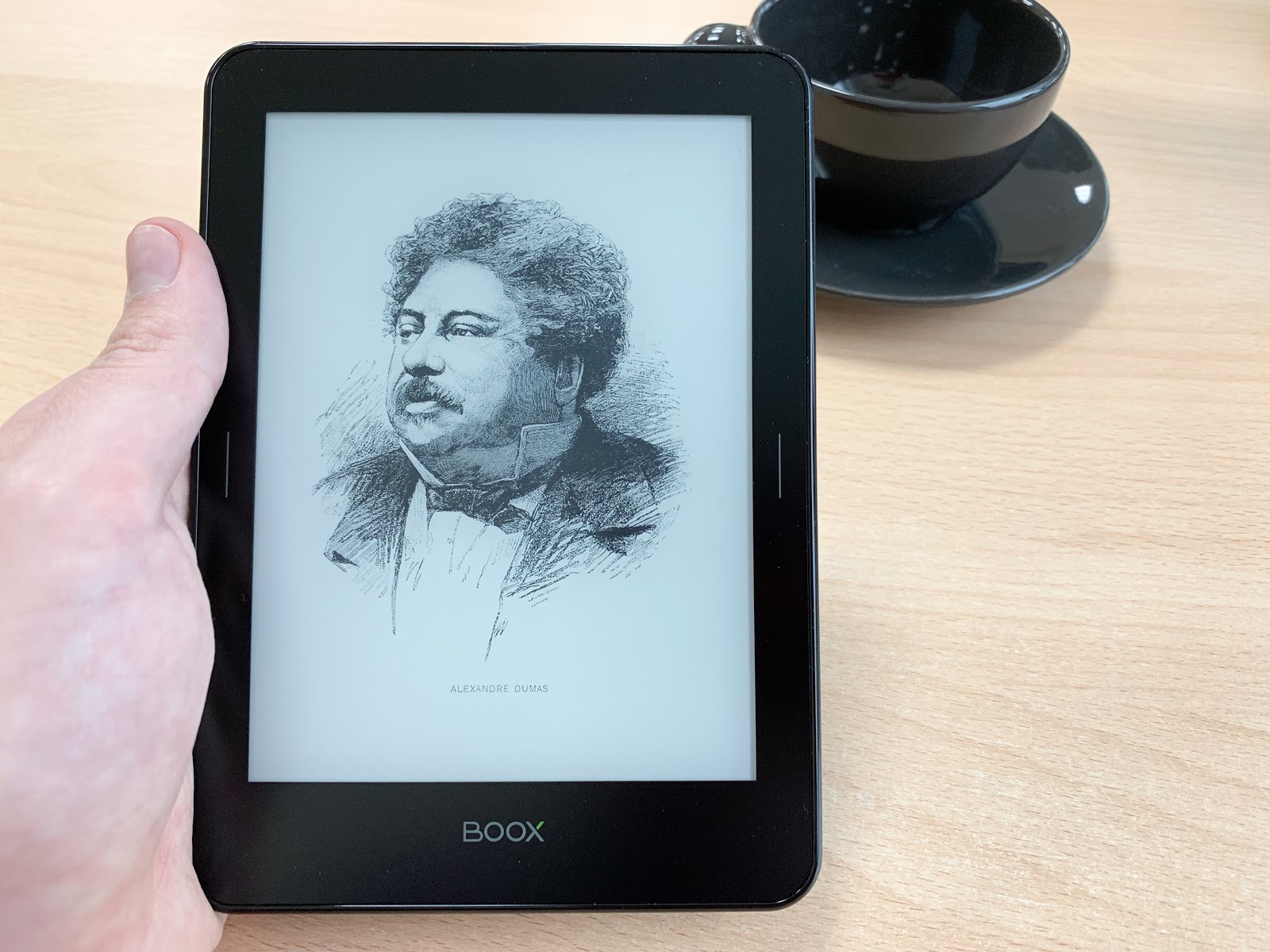
In the journey. Perhaps, here is the best reader just did not come up with anything. 13 hour flight? He will fly by unnoticed, if you read your favorite book or teaching literature, and upon arrival there will still be more than 70% of the charge (the tablet would be discharged "to zero"). Many people like to read on vacation, and there are cases when the e-book is charged once before the trip and reconnected to the network only upon arrival (if this is not downshifting to half a goal, of course). Yes, the films on the book do not look, but, in fact, it is not done for this. And if by rest is meant a seal lying under the sun, then an e-book will be appropriate here, unlike all the same smartphones and tablets. Read-sunbathe - for a week-long vacation you can decently pumped.
In prison? The author of this publication has just finished reading the electronic version of the book “3½” by Oleg Navalny, in which he spoke about his everyday life spent on the other side of freedom. And there was a separate section about gadgets, one of which was just an e-book, in which he and his father played chess. Of course, in all institutions there are different modes, but apparently, an e-book without a SIM card is quite a valid gadget with which reading may be more comfortable. But, of course, we don’t want such a use case for anyone.
Reading, reading, reading! Well, the truth is, it is much more convenient to load several books into an electronic device than to carry a paper equivalent with you. And taking into account the prices for the latter, it is also much more profitable: again, we remember about electronic libraries and shops, where the version of the book in .fb2 can be bought for 59 rubles instead of 399 rubles for the paper one. Well, the battery life again plays a big role here. Yes, and readers in the arsenal of ONYX BOOX enough - from a simple 6-inch "Caesar" to the flagship 10-inch "Euclid." Or the hero of this review - Monte Cristo 4.

To some, he is known by the names of Lord Wilmore, the abbot Busoni and others ... but in the end he swims away into the sunset, and everything is fine with him. The same with the eponymous reader: Monte Cristo 4 turned out to be an interesting flagship reader, which has been waiting for a long time. Now it is not necessary to take a device with a large screen if you need a productive e-book with a good display and high pixel density. If the screen of MAX 2 or Gulliver was still too big to carry the reader with you, then Monte Cristo 4 is fine in this regard. Yes, and they often cost as a laptop, and the "Monte Cristo" - a little more than 13,000 rubles. The device is suitable for both home reading lovers and those who constantly deal with documents at work or school, including graphic files. The case is sensitive to fingerprints, but not so much
Someone can scare the price, but here it is worth taking into account the fact that E-Ink is essentially a monopolist in the market of electronic books (and good components can not be cheap). Low-cost readers offer less functionality, and the screen diagonal may be the same, but you can forget about high resolution and ppi. And if we put pros and cons on the scales, our graph is good-looking (immodestly so)). Thank you for your attention, we are ready to answer questions in the comments.
Alexander Dumas, "Count of Monte Cristo" Hi, Habr! When we talked about the new line of 6-inch models of ONYX BOOX book readers, we casually mentioned another device - the Monte Cristo 4. It deserves a separate review not only because it belongs to the premium segment due to an aluminum-magnesium alloy case and a screen with protection from the Japanese manufacturer Asahi; Monte Cristo 4 is the flagship of the line, which, with a smaller screen diagonal, is able to offer performance at the level of its older brothers, and it has become even more interesting to interact with content. All the details are traditionally under the cut.

Until recently, ONYX BOOX readers with a large screen diagonal could boast of flagship characteristics. There is no need to go far for examples - take the same Gulliver or MAX 2 , which we have already reviewed in detail. It turns out, if you need advanced iron, you had to choose large devices. But power is not always closely aligned with the size of the screen: it often happens that the user needs maximum performance in a compact package. For such readers, ONYX BOOX Monte Cristo 4 was released.
The new model has become a logical continuation of the ONYX BOOX brand reader line, which is represented in Russia by MakTsentr. In the naming of the model, Alexander Dumas again helped with his famous novel “The Count of Monte-Cristo”, to which you can find a lot of references - and this applies to both the external design of the box with the device and its filling (when putting the book into sleep mode, various sketches from books). The fourth iteration of ONYX BOOX Monte Cristo can’t be called a tick update. To verify this, just glance at the technical characteristics of the new reader:
| Display | Touch, 6 ", E Ink Carta Plus, 1072 × 1448 pixels, 16 shades of gray, multitouch, SNOW Field |
| Backlight | MOON Light + |
| Touch screen | Capacitive multisensory |
| operating system | Android 4.4 |
| Battery | Lithium-polymer, capacity 3000 mAh |
| CPU | Четырёхъядерный, 1.2 ГГц |
| Оперативная память | 1 Гб |
| Встроенная память | 8 Гб |
| Карта памяти | MicroSD/MicroSDHC |
| Поддерживаемые форматы | TXT, HTML, RTF, FB2, FB3, FB2.zip, DOC, DOCX, PRC, MOBI, CHM, PDB, EPUB, JPG, PNG, GIF, BMP, PDF, DjVu |
| Беспроводная связь | Wi-Fi 802.11b/g/n |
| Габариты, мм | 159 × 114 × 8 |
| Вес, г | 205 |
What is so interesting in our "graph"? First, the latest generation E Ink Carta Plus screen with SNOW Field function and MOON Light + backlight, which allows you to adjust the color temperature of the backlight. At the same time, the display has an impressive resolution of 1072 × 1448 pixels and an outstanding pixel density of 300 ppi for this type of screen. The indicator is comparable to the quality of paper printing.

For sweetness - 1 GB of RAM (no need to be surprised, this is REALLY a lot for an e-book), 8 GB of storage due to the support of memory cards and Wi-Fi for accessing the Internet using the built-in browser and connecting network libraries. I was a little surprised that it was decided to “roll” the shell on Android 4.4, not Android 6.0, but this had no effect on the reader’s functionality.

The new mobile version of Habr is great for reading from an e-book. We
'll talk more about the reader’s functions a little later, but for now let's see what the potential customer will appreciate with the new product package.
Why "Monte Cristo"?

The manufacturer is always pleased with interesting packaging, and the box Monte Cristo 4 is no exception. It is made of white dense cardboard, on the front of which stands the name and the lock If. The package bundle is already familiar to us from other ONYX BOOX readers: the e-book itself is in a cover case, the charger (220 V) is a standard charger, USB cable and documentation. You can get the reader out of the box very easily.


The case mimics rough, embossed leather and has a hard frame, as well as two magnetic snaps. Inside there is a soft material to protect the screen. The Hall Sensor helps the book automatically go to sleep when the cover closes and wake up when it is opened. When reading, it does not distract, as it does not hide one centimeter from each side. Securely fixed, however, the thickness of the entire structure is almost doubled.

According to the image, the cover-case almost completely repeats the box - on it the name of the model and the same lock If, where Dantes was sent without trial in the eponymous work. Here you begin to understand why the manufacturer chose this name for its new product. Edmond Dantes, the protagonist of the novel, was known to have spent several years in prison, and he would definitely need an e-book that could work without recharging for up to a month (another thing was that there was no electricity and he could not recharge it but omit this moment). Other ONYX BOOX readers also have a talking name - one of them is dedicated to Robinson Crusoe, who spent a long time on an uninhabited island. By the way, the island "Monte Cristo", where Dantes subsequently found a treasure, was also uninhabited. A tablet or smartphone in such conditions will be discharged after two days (at best), the reader will last much longer, especially if you use it for 2-3 hours of reading per day. In standby mode, the charge he practically does not consume.

Of course, these are far from the only cases of using an e-book, and in order to know all the charms of this type of device, it is not at all necessary to end up in the SIZO or far from civilization. At the same time, it is precisely with such examples that one can truly appreciate the autonomous operation time of the reader, with which no mobile device can be compared that is suitable for performing similar tasks.
Marquis, yes you have outdone the king himself!
The reader is made in matt black, the case of the device is made of aluminum-magnesium alloy - another hint of premium positioning. The front has a protective glass from Asahi (the Japanese equivalent of Gorilla Glass), so this is one of the few devices that can be worn without a cover or cover. Of course, this device does not do much shock-resistant combination, but the likelihood that the glass will break is significantly reduced compared with conventional plastic-e-book reader. Despite the small diagonal, the device feels very monolithic and looks much more solid plastic readers. Whatever you say, and the use of metal in the device does its job.

There are almost no physical buttons, except for the button in the (s) key. Adjacent to it is an LED indicator that lights up red when connected to a power source or blue, if, for example, the device is turned on. A little further - a connector for charging and memory cards. Everything is minimal and tasteful.



And there are no more buttons here - if you just call the touch inserts on the sides, which by default act as a tool for turning pages while reading, and also a touch button built right into the manufacturer's logo (it's really cool, like working on an iPhone). Even the flagship ONYX BOOX MAX 2The buttons are physical, and here the hop - and the sensor was delivered. Is it possible to customize? Of course, the assignment of buttons changes in the settings: for example, you can assign them to turn on the backlight or the role of the "Menu" button.

In addition to the screen and control buttons, on the front panel there is the logo of the manufacturer, the back is completely empty. However, when using the cover from the kit (and it’s better to use it), the back end will still be completely closed.
In fact, for ONYX BOOX, this design is a breath of fresh air. The reader looks much more modern (and in 2019, the physical buttons are almost never found anywhere else), it was not for nothing that the updated appearance was made one of the trump cards of the Monte Cristo flagship.

Before bed and not only
Despite the fact that the E Ink Carta Plus 6-inch screen, it fits quite a lot of content and it is very clearly displayed - the resolution of 1072 × 1448 pixels and high pixel density make the image almost indistinguishable from a paper book (except to rustle with pages and shed coffee will not work on them). In comparison with the usual E Ink Carta screen, the resolution is noticeably higher. It is pleasant to look at the screen, eyes do not strain, fonts of any size remain clear (it's like a retina-screen after the usual one). If something needs to be increased - for example, if you open a multi-page PDF with an apartment plan for future repairs, there is always a multitouch zoom.
The diagonal of the device is ideal primarily for works of art. However, this is not a problem with any other ONYX BOOX reader. Not bypassed and important function MOON Light +, which the manufacturer uses in all its new devices. If the usual MOON Light backlight allowed adjusting the intensity of the emitted light, then its second iteration is distinguished by a separate adjustment of warm and cold light. It makes it possible to read in low light conditions: this is especially noticeable before bedtime, when a warm shade is much more pleasant to perceive the eye than a cold one (not for nothing that Apple has a similar Night Shift function; and f.lux has millions of users). With this light you can sit for your favorite piece before going to bed for several hours, and your eyes will not get tired. Well, get to sleep faster


The standard set of functions of ONYX BOOX readers can also be attributed to the SNOW Field technology: it minimizes the number of artifacts (residues from the previous image) on the screen with partial redrawing. If you flip through the pages, no remnants of the previous text remain (what is the reason that the readers of 10 years ago have sinned).
On the interface, you can not stop in detail, because in modern manufacturer's reading rooms it is the same plus or minus, with the exception of a couple of elements. For example, if the reader does not have Wi-Fi support, then the Browser application is not required. After switching on, Monte Cristo 4 shows the main navigation screen (well, after pasting from the novel of the same name), where it is possible to access the library, open the file manager, the applications section, open the MOON Light + backlight setting, enter the general settings, and launch the browser .


Icons are conveniently located on the bottom panel - after the smartphone is very familiar.


There are also two reading applications - OReader and Neo Reader version 2.0, both already familiar to us from previous reviews. In OReader, above the page turning bar, there is a panel for accessing book display parameters and useful tools. If you work with files in PDF / djvu format, you can select a specific area to zoom in, read an enlarged page by fragments, crop by page and width, change the scale, activate the backlight, go to the settings for customization. For graphs and charts, it is better to tweak the contrast, so that small values look even better, and in dark time, make the screen tint a little warmer. Here you can prepare for the report at work, and for the exam, and read a book for yourself. And, of course, the touch screen on the e-reader is an incredibly convenient solution.

You can scroll through with a simple press, and swipe left or right, as well as using the touch buttons. The autolocation function turned out to be very convenient, its speed is regulated by repeated pressing the paging buttons. It is useful when you need to rewrite the outline, and do not want to be distracted each time and include the next page.

If you load a book with heavy pdf-kami, you definitely will have a little built-in 8 GB of memory. In this case, there is a microSD slot with support for memory cards up to 32 GB. When using the reader to study or just for episodic reading, then 8 GB will be more than enough. Supported formats are also enough - DOCX, PRC, CHM, PDB and many others.

When reading, it becomes useful not only a full multi-touch with the support of five simultaneous touches, but also a call to translate a word using a loaded dictionary (just touch the desired word and hold until the translation appears), automatic memorization of the last open book and page and the ability to quickly select a font, rotate image, italicize the fragment and much more.

Many people are often worried about the speed of the device, and there are no problems with this: the 4-core processor and 1 GB of RAM do their thing: the reader quickly opens books and looks through the pages, and also quickly performs operations like zoom and smooth scrolling. The device also reacts quickly to the touch buttons, and in general the interface is responsive, you will not notice any lags or hangs regardless of the open document: be it a small book or a huge PDF manual.


Where to get books? Everyone, as a rule, answers this question himself, but it is still impossible to find anything better than official sources. Now there are a lot of shops with electronic versions of books, and after downloading, you can download the work to your device in a couple of clicks (even on a Mac, if you use something like Android File Transfer). Well, plus in Monte Cristo 4 there is Wi-Fi, which means support for network libraries (OPDS-directories). These are hundreds of thousands of free books with convenient sorting.


You can spend a little more time to describe all the advantages of this reader, but mostly they will be similar to the same Darwin 6, which we have already a few days ago in detail told . Therefore, it is important to highlight the main differences, thus summing up a small result:
- High Resolution E Ink Carta Plus and 300 ppi Screen
- Aluminum-magnesium alloy body instead of plastic
- Safety glass Asahi
- Wi-Fi support
- MOON Light + and SNOW Field
- Cover case that has become even more convenient
Why an e-book in 2019?
To know all the delights of the reader, it is not necessary to spend several years in distant places like Dantes (or even 15 days) or go to an uninhabited island like Robinson Crusoe. There are a lot of cases for using e-books, here are some of them.
On learning. You can forget about a ton of textbooks and notes, because the reader allows you to read them just like a paper equivalent, without fatigue for the eyes and other artifacts. The built-in dictionary makes it possible to read in other languages, and the translation of the word is displayed directly on the same page. A long battery life allows you to forget about charging for at least several days (or even more, depending on how intensively you use the device), and the high-resolution screen, like Monte Cristo 4, can even cope with the literature on analytical geometry and linear algebra. displaying each character.
In the work. Now this is a less popular case for using e-books, but the development of the relevant market makes readers more and more popular among technical workers and journalists. The former can load multipage documents and not worry about “charging”, while the latter can comfortably study the literature on the topic and simply replenish their vocabulary. Programmers generally can use the reader as a second monitor - MAX 2 is well suited for this purpose.

In the journey. Perhaps, here is the best reader just did not come up with anything. 13 hour flight? He will fly by unnoticed, if you read your favorite book or teaching literature, and upon arrival there will still be more than 70% of the charge (the tablet would be discharged "to zero"). Many people like to read on vacation, and there are cases when the e-book is charged once before the trip and reconnected to the network only upon arrival (if this is not downshifting to half a goal, of course). Yes, the films on the book do not look, but, in fact, it is not done for this. And if by rest is meant a seal lying under the sun, then an e-book will be appropriate here, unlike all the same smartphones and tablets. Read-sunbathe - for a week-long vacation you can decently pumped.
In prison? The author of this publication has just finished reading the electronic version of the book “3½” by Oleg Navalny, in which he spoke about his everyday life spent on the other side of freedom. And there was a separate section about gadgets, one of which was just an e-book, in which he and his father played chess. Of course, in all institutions there are different modes, but apparently, an e-book without a SIM card is quite a valid gadget with which reading may be more comfortable. But, of course, we don’t want such a use case for anyone.
Reading, reading, reading! Well, the truth is, it is much more convenient to load several books into an electronic device than to carry a paper equivalent with you. And taking into account the prices for the latter, it is also much more profitable: again, we remember about electronic libraries and shops, where the version of the book in .fb2 can be bought for 59 rubles instead of 399 rubles for the paper one. Well, the battery life again plays a big role here. Yes, and readers in the arsenal of ONYX BOOX enough - from a simple 6-inch "Caesar" to the flagship 10-inch "Euclid." Or the hero of this review - Monte Cristo 4.
And with the graph that?

To some, he is known by the names of Lord Wilmore, the abbot Busoni and others ... but in the end he swims away into the sunset, and everything is fine with him. The same with the eponymous reader: Monte Cristo 4 turned out to be an interesting flagship reader, which has been waiting for a long time. Now it is not necessary to take a device with a large screen if you need a productive e-book with a good display and high pixel density. If the screen of MAX 2 or Gulliver was still too big to carry the reader with you, then Monte Cristo 4 is fine in this regard. Yes, and they often cost as a laptop, and the "Monte Cristo" - a little more than 13,000 rubles. The device is suitable for both home reading lovers and those who constantly deal with documents at work or school, including graphic files. The case is sensitive to fingerprints, but not so much
Someone can scare the price, but here it is worth taking into account the fact that E-Ink is essentially a monopolist in the market of electronic books (and good components can not be cheap). Low-cost readers offer less functionality, and the screen diagonal may be the same, but you can forget about high resolution and ppi. And if we put pros and cons on the scales, our graph is good-looking (immodestly so)). Thank you for your attention, we are ready to answer questions in the comments.
